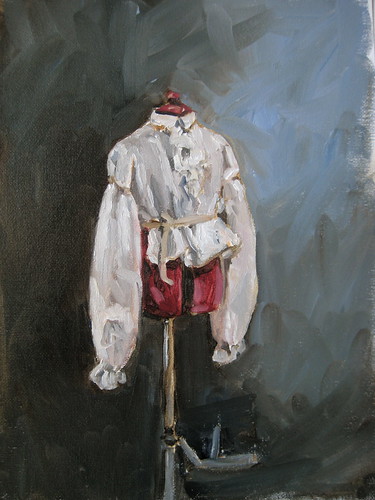Oil on Masonite, 18"x24"
Also, apologies for falling behind a bit on the internet! Even though I drew the initial sketch for this painting last summer, I didn't get around to actually painting it until about four weeks ago. It was really great to be properly painting again... I hadn't realized how much I'd missed it.
In the spirit of getting back into the practice of regularly painting, I did a couple small still lives recently as well. It had been several years since I'd painted from life, and even longer since I'd done a still life of any kind. What I'd managed to forget, however, is how incredibly boring I find still lives to be. There must be some sort of magical method or prop that would make the practice interesting, but as it stands, I find this sort of thing incredibly dull. Good practice, but so tedious. Both are oil on canvas paper, 9"x12".
I have a final sketch and prepped board ready for the next painting, and I'm really rather excited about it. There'll actually be a real background and environment for once!
And next weekend I'll be travelling up to Michigan for my favorite Civil War event, so hopefully there'll be good pictures and interesting tales to relate after that. I'll be taking a sketchbook along with me too... I've never sat and sketched people at a reenactment before, but I think it could be a lot of fun! (also, I really don't feel like doing handwork or knitting these days, yet I don't want to be completely filled with sloth and idleness) ;)



















